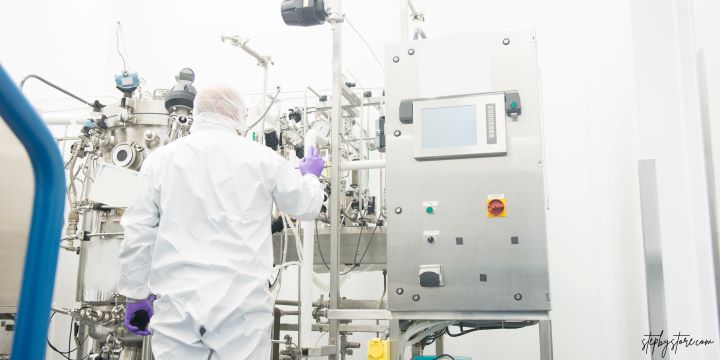Table of Contents
- Introduction to Hot Melt Extrusion
- Benefits of Hot Melt Extrusion
- How It Works
- Common Misperceptions
- Applications in Pharmaceuticals
- Future of Hot Melt Extrusion
- Final Thoughts
Hot melt extrusion (HME) has been a staple technique in various industries for decades. Initially used in plastics processing, its application in pharmaceuticals has revolutionized drug formulation. A detailed exploration of hot melt extrusion reveals why this method is increasingly considered a pharmacist’s secret weapon. By merging fundamental principles with modern advancements, HME provides a versatile and efficient pathway for drug manufacturers. The rise of HME in pharmaceuticals isn’t simply a trend; it’s a transformation. Traditional methods often need to be revised to address the complexities of modern drug formulations. This is where HME steps in, offering a seamless blend of innovation and practicality. As we unpack the nuances of this technology, its role in the broader context of medical advancements becomes strikingly evident.
Benefits of Hot Melt Extrusion
HME offers several advantages over traditional drug formulation methods. These include improved drug solubility, enhanced bioavailability, and the elimination of solvent use, which makes the process environmentally friendly. Additionally, continuous processing allows for better scalability and consistency. The reduction in manufacturing steps not only saves time but also lowers overall production costs. Furthermore, HME can produce amorphous solid dispersions, which enhance the bioavailability of poorly water-soluble drugs, thus making treatments more effective for patients. One of the standout benefits is the environmental impact. With increasing regulations and a push towards Greener solutions, HME’s solvent-free process aligns perfectly with these goals. It not only minimizes hazardous waste but also reduces energy consumption, making it a sustainable choice for the future of pharmaceutical manufacturing.
How It Works
The primary mechanism of HME involves heating a mix of the active drug and excipients until they melt, then forcing them through an extruder to create a homogenous mixture. Upon cooling, the extruded material solidifies into a stable and carefully controlled form. The extruder controls the temperature, pressure, and shear forces to ensure a uniform blend and to avoid thermal degradation of sensitive compounds. Essentially, the process transforms a powdery blend into a solid form that can be easily administered, whether as a tablet, capsule, or another dosage form.
Common Misperceptions
Despite its benefits, HME is often misunderstood. A frequent myth is that it can only be used for thermally stable compounds. However, advances in HME technology have broadened its applicability to a broader range of substances. With innovations in cooling and processing techniques, even heat-sensitive active pharmaceutical ingredients (APIs) can be utilized effectively. This dramatically expands the scope of HME, making it a viable option for a more comprehensive array of drug formulations than previously thought. Another misconception is that HME is prohibitively expensive. While the initial setup costs can be high, the long-term savings in production efficiency and material costs often outweigh these expenditures. The flexibility of HME also allows for the development of complex formulations that would be challenging to produce using conventional methods. These complexities can address specific patient needs, including modified release profiles or taste-masked formulations, adding additional layers of value to the process.
Applications in Pharmaceuticals
HME is utilized extensively in the pharmaceutical industry to create controlled-release drug formulations, improve the dissolution rates of poorly water-soluble drugs, and develop novel drug delivery systems. Biodegradable polymers used in HME also offer eco-friendly disposal options. The ability to design drugs with specific release characteristics means that patients can benefit from medications that provide prolonged therapeutic effects, reducing the frequency of dosing and improving adherence to treatment regimens. In pediatric and geriatric medicine, where taste masking is crucial, HME’s ability to evenly distribute flavoring agents within a formulation is particularly beneficial. Children and older people often have difficulty swallowing pills or experience aversions to specific tastes, making this application extremely valuable.
Moreover, HME’s ability to incorporate multiple active ingredients into a single dosage form ensures that complex therapeutic regimens can be simplified, enhancing patient compliance and overall treatment outcomes.
Future of Hot Melt Extrusion
The future of HME is promising, with ongoing research focusing on expanding its capabilities. Innovations such as real-time monitoring and advanced material science are set to strengthen its role in pharmaceuticals further. This will likely lead to even safer, more effective, and eco-friendly drug formulations. The integration of sensors and digital technologies can facilitate better control over the extrusion process, ensuring consistent product quality and enabling the rapid identification and correction of any deviations.
Moreover, the integration of artificial intelligence and machine learning can optimize the HME process, reducing trial-and-error phases in formulation development. This would allow for faster time-to-market for new drugs, benefiting both the industry and patients. Machine learning algorithms can predict the best process parameters for new formulations based on historical data, minimizing wasted resources and accelerating the development pipeline.
Final Thoughts
To sum up, hot melt extrusion is a versatile and powerful technique that continues to evolve. Its benefits in the pharmaceutical industry are undeniable, offering a sustainable, efficient, and effective way to formulate drugs. As technology progresses, its applications are bound to expand, making it an indispensable tool in drug development. Whether it’s creating more bioavailable drug formulations or reducing environmental impact, HME stands as a beacon of innovation in pharmaceutical science.



